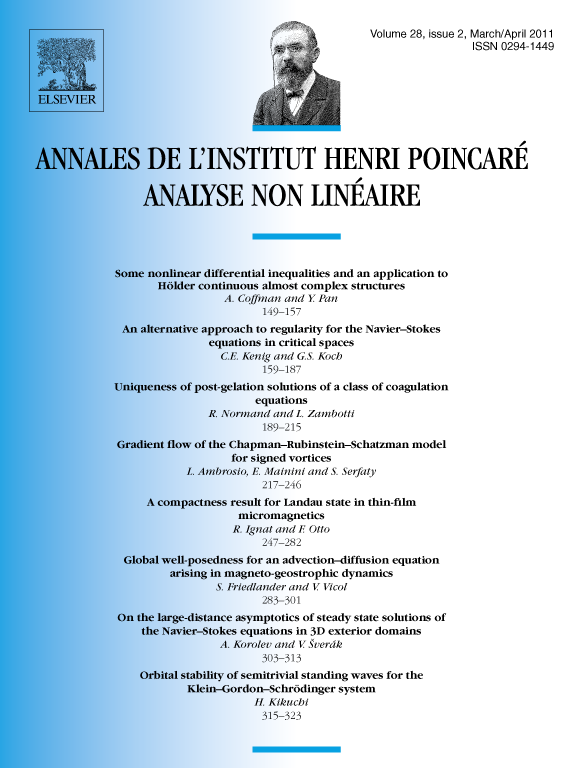Gradient flow of the Chapman–Rubinstein–Schatzman model for signed vortices
Sylvia Serfaty
UPMC Univ Paris 06, UMR 7598 Laboratoire Jacques-Louis Lions, Paris, F-75005, France; CNRS, UMR 7598 LJLL, Paris, F-75005, France; Courant Institute, New York University, 251 Mercer St., NY 10012, USALuigi Ambrosio
Scuola Normale Superiore, Piazza Cavalieri 7, 56100 Pisa, ItalyEdoardo Mainini
Dipartimento di Matematica “F. Casorati”, Università degli Studi di Pavia, via Ferrata 1, 27100 Pavia, Italy

Abstract
We continue the study of Ambrosio and Serfaty (2008) [4] on the Chapman–Rubinstein–Schatzman–E evolution model for superconductivity, viewed as a gradient flow on the space of measures equipped with the quadratic Wasserstein structure. In Ambrosio and Serfaty (2008) [4] we considered the case of positive (probability) measures, while here we consider general real measures, as in the physical model. Understanding the evolution as a gradient flow in this context gives rise to several new questions, in particular how to define a “Wasserstein” distance for signed measures. We generalize the minimizing movement scheme of Ambrosio et al. (2005) [3] in this context, we show the entropy argument of Ambrosio and Serfaty (2008) [4] still carries through, and derive an evolution equation for the measure which contains an error term compared to the Chapman–Rubinstein–Schatzman–E model. Moreover, we also show the same applies to a very similar dissipative model on the whole plane.
Cite this article
Sylvia Serfaty, Luigi Ambrosio, Edoardo Mainini, Gradient flow of the Chapman–Rubinstein–Schatzman model for signed vortices. Ann. Inst. H. Poincaré Anal. Non Linéaire 28 (2011), no. 2, pp. 217–246
DOI 10.1016/J.ANIHPC.2010.11.006